Divers recover chunk of Stone Age ‘Black Gold’ from Neolithic shipwreck in Naples
Police have made an huge discovery from what could be a Neolithic shipwreck on the sea bed near an iconic Italian destination.
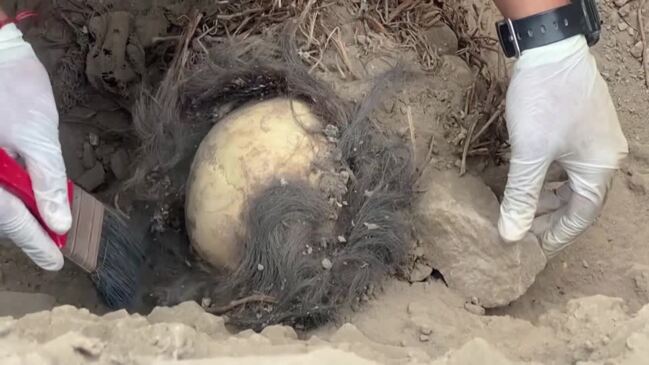
To the ancients, it was pure magic. It was dark. It was translucent. It was impossibly sharp. Now what may be one of the oldest shipwrecks ever discovered hints that obsidian was the black gold of the stone age.
Divers near the Italian island of Capri have recovered a chunk of the purple-tinged volcanic glass in what appears to be the remains of a Neolithic shipwreck.
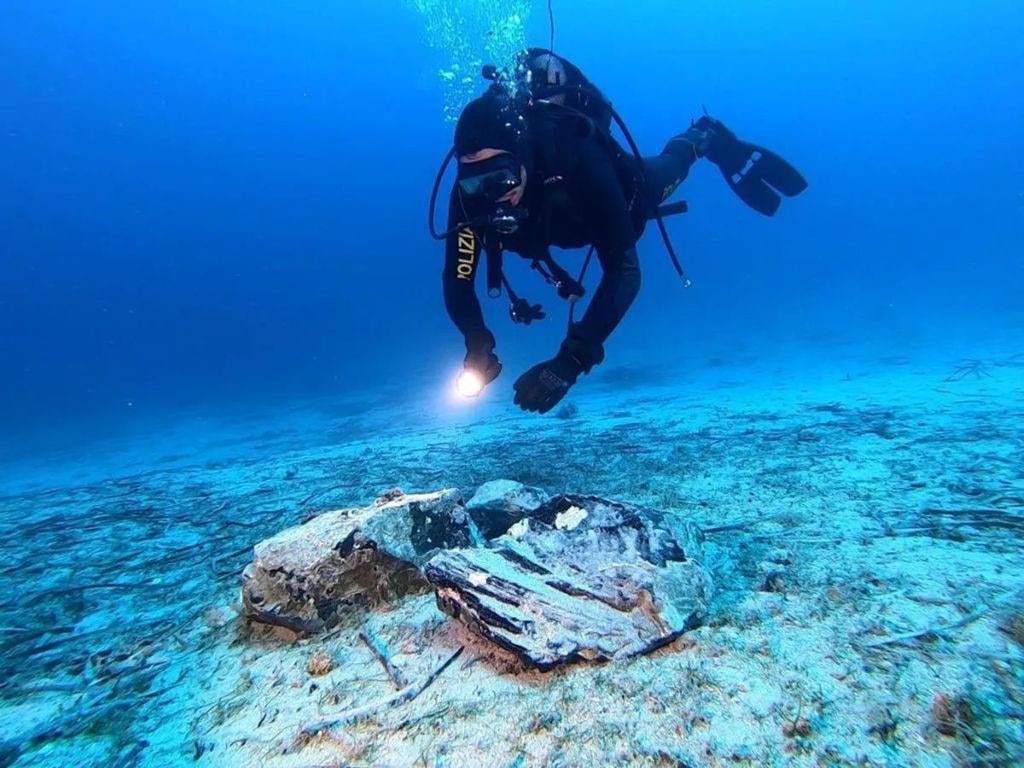
The 8kg slab is about the size of a hefty reference book. And its surface shows it had been chiselled into shape for ease of transport.
Italian archaeologists say it is an obsidian “core” – a block of solidified lava being moved to “customers” who would later chip off flakes of varying shapes and sizes to suit their own needs.
These natural glass flakes have incredibly sharp edges and were highly prized for hunting spears, arrows and knives. It was also valuable for stone-age industries, including drilling, skinning, exfoliating and shaping raw hides.
The Neolithic (Stone Age) period ended about 4000 years ago. However, Ancient Egypt considered obsidian blades sacred and continued their ceremonial use well into the Classical era.
There is ample evidence suggesting the existence of stone-age international trade networks. Semi-precious stones, shells and clayware have been found scattered across Europe and the Middle East, often hundreds of kilometres from their geological points of origin.
Obsidian tools dating back 20,000 years have been found in Poland. But it has no natural source of the volcanic glass. Instead, it appears to have been imported from as far as Turkey.
And obsidian glass dating from 4000BC found on the island of Borneo in Southeast Asia had to have been carried 3500km across the Pacific from the island of New Britain east of Papua New Guinea.
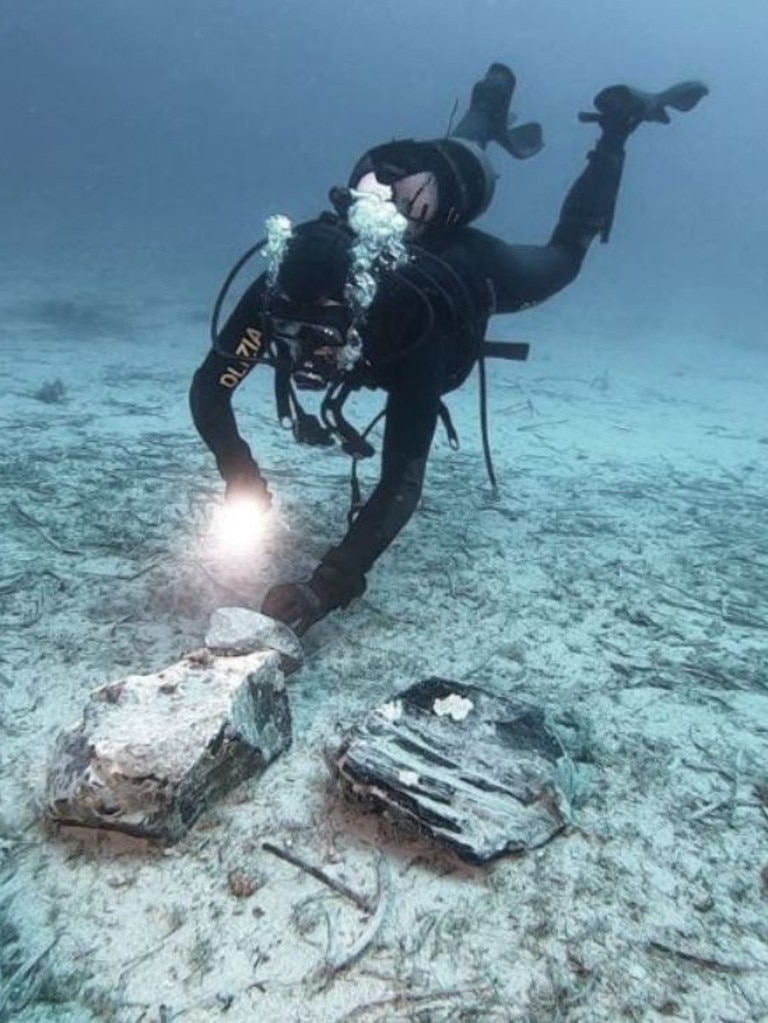
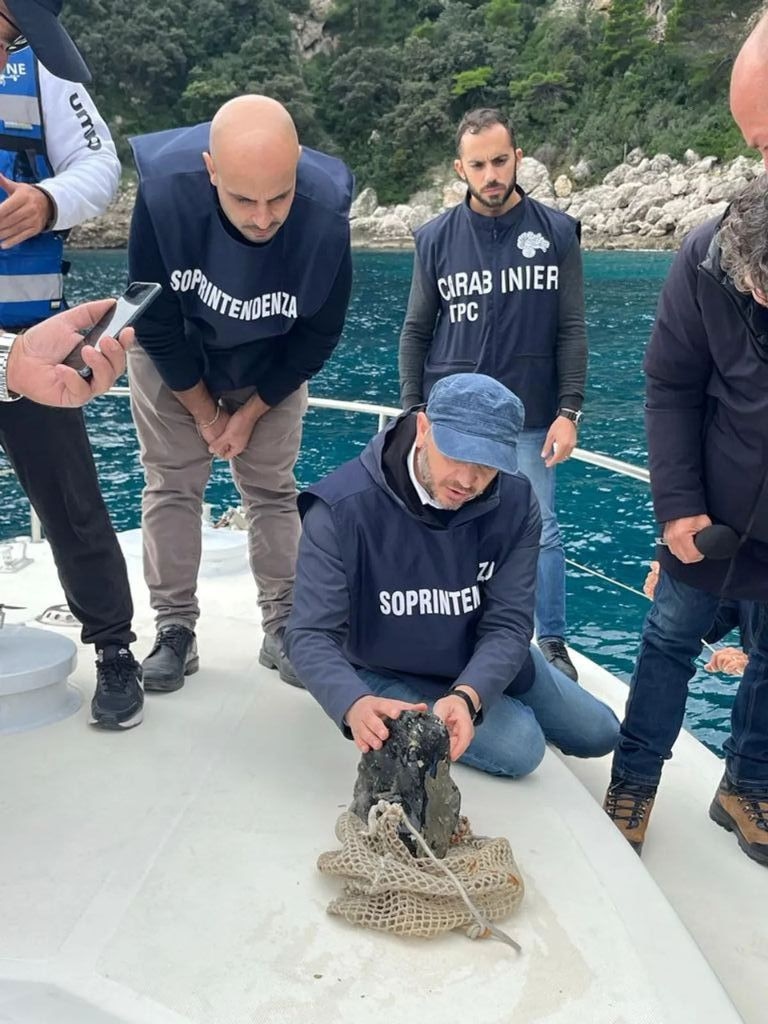
Italy says the Capri find is the first time trade-grade raw obsidian has been found in what may be a European neolithic shipwreck.
“Finding a Neolithic wreck would be mind-blowing,” Wreckwatch magazine editor Sean Kingsley told Newsweek.
“If any extensive cargo and crew’s belongings survive, the discovery would become one of the top five underwater strikes of all time. For now, the jury is out, however.”
Italy’s Ministry of Culture says the obsidian block was brought to the surface by police divers on November 20. It had been found on a clear patch of sea bed some 40m beneath the surface, near Capri Island’s popular Blue Grotto sea cave tourist site.
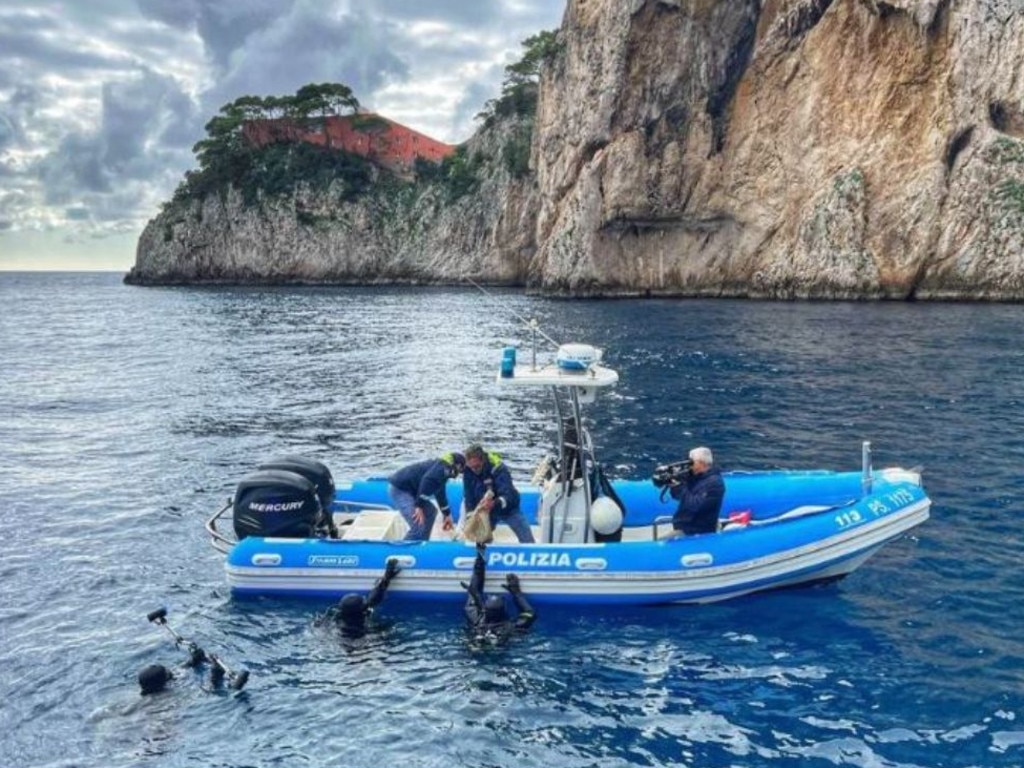
The exact location of the discovery is being kept secret. Swimming is already prohibited in the area because of dangerous waves and tides.
More Coverage
The origin of the obsidian block has yet to be determined. But there are several volcanic islands in the Mediterranean with deposits, including one 125 km from the wreck site on Palmarola near Naples. Other sources include the Aegean Islands, Turkey and Ethiopia.
Maritime scientists from the Superintendency of Archaeology, Fine Arts and Landscape (SABAP) for the Naples Metropolitan Area say the core was just part of a “sunken load” found scattered across the sea bed by police divers in October. All traces of the timber boat that would have carried it are believed to have long since rotted away.
However, Superintendent Mariano Nuzzo said in a statement that underwater archaeologists will soon begin an “extensive instrumental survey” to determine if further cargo is buried in the sand.






